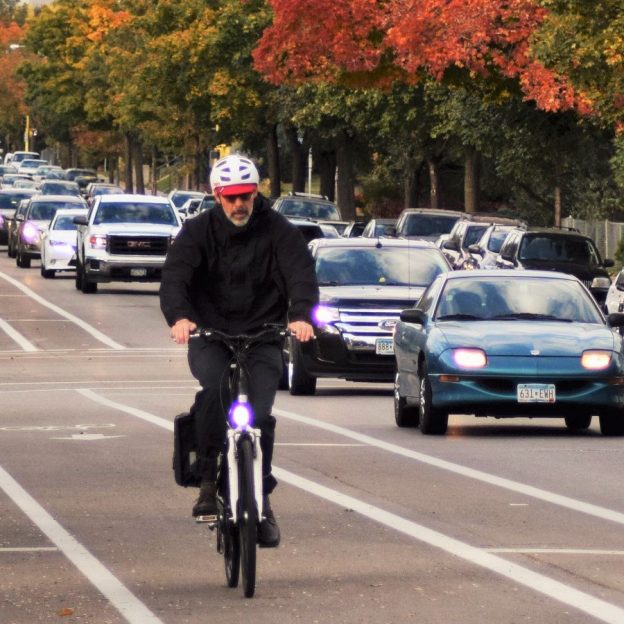by John Brown
Now that fall is just around the corner and the days are getting shorter, we must consider visibility while staying active amongst the autumn colors. As the leaves change and then drop, we need to focus on passive and active visibility. Features like reflectors and bright colors are passive forms of visibility, whereas lights and blinkers are excellent examples of active visibility.
Read on to discover where each one is most helpful and efficient.
First Passive visibility
Most autumn bike rides start in the light and gradually evolve into darkness as the rider pedals. Most riders rely on passive visibility to get them home in these cases. If your ride is under street lamps or lights, that passive visibility will get you home. The most common form of passive visibility is the lowly reflector. These plastic devices are required by the CPSC (U.S. Consumer Product Safety Commission) to be installed on all bicycles sold in the United States. You will find reflectors in white (front and wheels) and Red (rear).
Additionally, many apparel companies install reflective materials onto their products. Like the reflector on your bike, these reflective materials will capture any light directed your way and redirect it back to the source of the light, so you are visible. Passive reflectivity falls short when there is no light source to activate visibility.
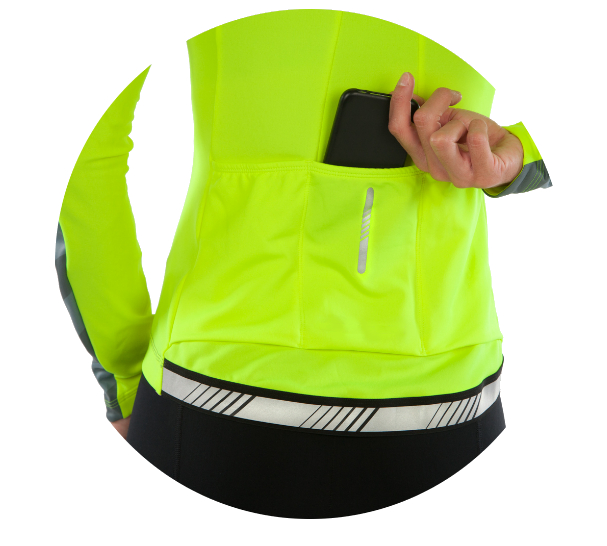
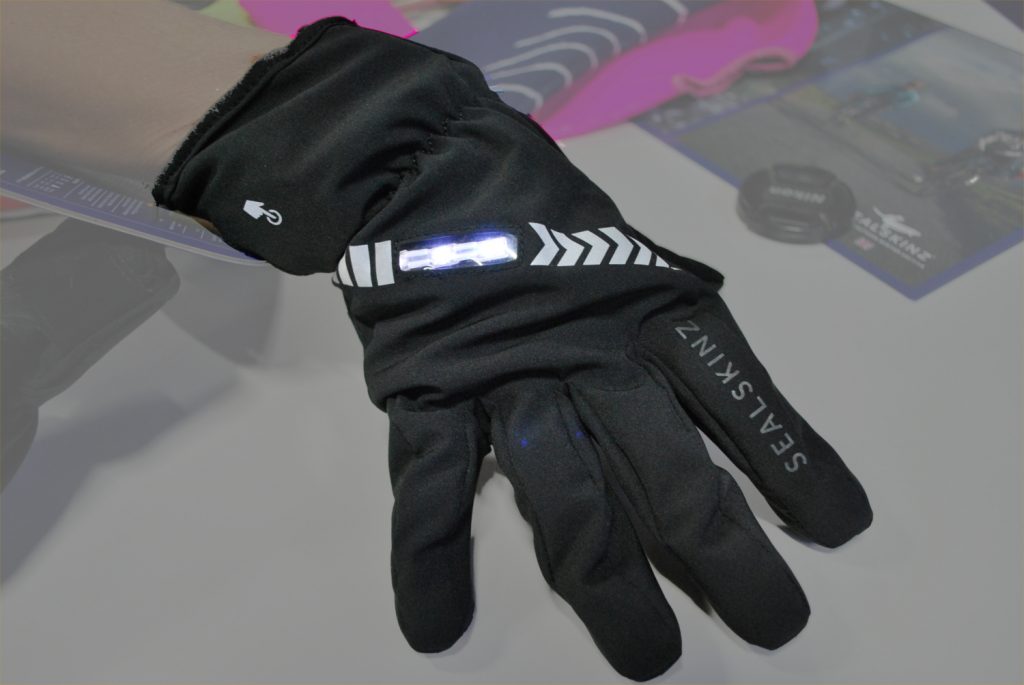
Active visibility
When the area is devoid of a light source, you need to create that light as a rider to keep yourself safe. For cyclists, Lights and blinkers are the most common devices for light. The light and the blinker differ because blinkers are designed to be seen, while lights allow a rider to both see and be seen.
Great lights are usually rechargeable and use an LED bulb. They are a necessity for riders who spend a lot of time off-road or on unlit paths. While most mount onto the bars or helmet, a few companies integrate lights into the bike or helmet.
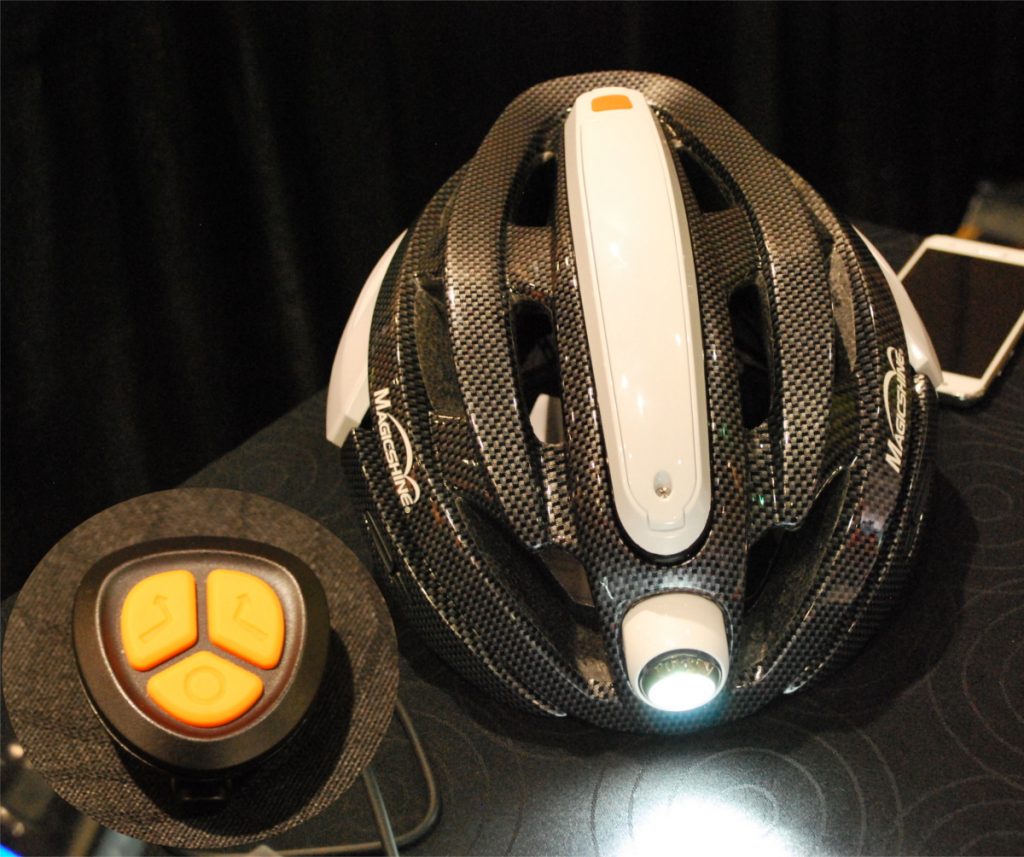
Blinkers are usually battery-operated and use an LED to flash intermittently. They can easily be mounted on bicycles and, in some cases, incorporated into helmets, gloves, shoes, saddles, and handlebars.
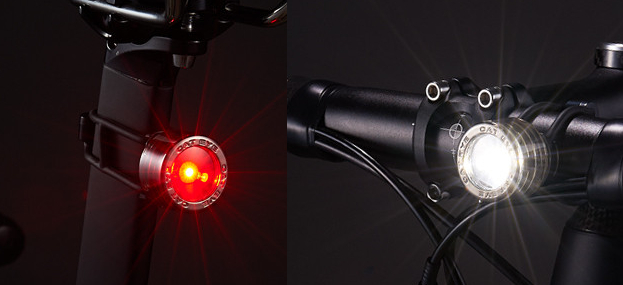

What to use this Fall
For the fall season, mount a pair of lights on the bike (one front and one back). Switch on the lights when you get stuck in low-light and high-traffic areas. Even if your route uses a road with street lights for any portion, a front light makes things safer. Overall, think ahead before your next ride and be prepared to ensure you can see others and they can see you.
About John Brown, the author
John operates Browns Bicycle in Richfield, MN, as a lifelong cyclist and consummate tinkerer. It all started for him in grade school when the bike bug bit him, and today, the bicycle fever is still there. Now, and over the past thirty years, he has worked at every level in the bike industry. Starting, like most, sweeping floors and learning anything he could about bikes. He eventually graduated as a service manager and then as a store manager. Over the years, he has devoted extensive time to designing and sourcing bicycles and parts for some of the world’s largest bike companies. All the while focusing on helping as many people as possible enjoy the love of riding a bike. In that pursuit, he has taught classes (both scheduled and impromptu) on all things bikes. John also believes in helping every rider attain their optimal fit on the bike of their dreams. Please feel free to stop by anytime to discuss bikes, fit, and parts, or share your latest ride. You can also see John’s tricks and tips on the Brown Bicycle Facebook Page.


